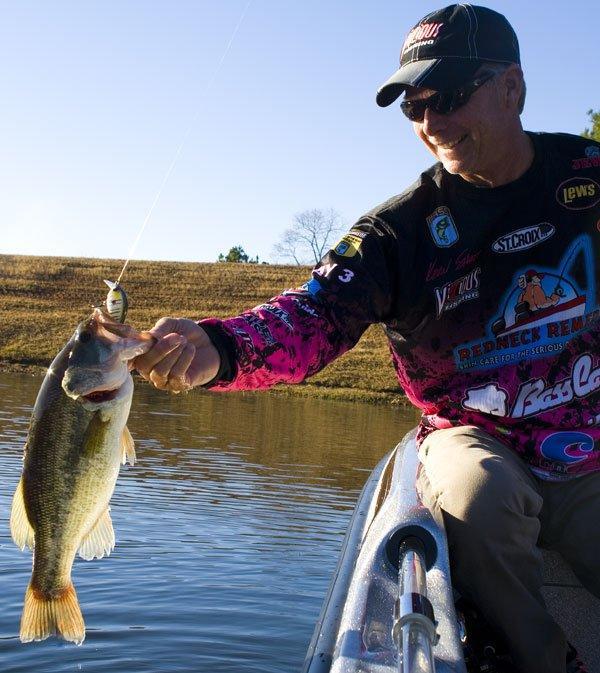Crankbait fishing is one of the techniques in our sport that can be made either very simple or quite complicated. Instead of overthinking things, Vicious Fishing pro and renowned crankbait guru Kevin Short keeps crankbait fishing as simple as possible. When choosing between balsa and plastic crankbaits, he considers 3 important elements above all else. Those include the following:
- Type of cover
- Crankbait durability
- Buoyancy
His bait choice depends on the characteristics of each crankbait that can easily be broken down into positive and negative attributes for each type of crankbait.
Pros of balsa crankbaits
When faced with areas full of snag-inducing wood cover, Short reaches for his balsa plugs. The buoyancy of a crankbait is determined by material or the amount of air that is trapped inside its body. Balsa is a highly buoyant light wood.
“If I’m fishing around stumps, brush piles or docks, I’m going to throw a balsa bait,” Short said. “A balsa crankbait floats above and away from wood much quicker, which drastically reduces your number of hang-ups.”
Cons of balsa crankbaits
Although it may seem as if a balsa crankbait is a perfect choice for all heavy cover situations, Short avoids balsa baits when he finds himself around thick grass. His reasoning may surprise you.
“If you crank around grass enough, you’re going to get it tangled on your bill and treble hooks—it’s unavoidable,” Short said. “Instead of picking the grass off with your fingers, it’s easier to simply slap the bait on the water. If you do that with a 20 dollar balsa bait, you’re going to bust it wide open and ruin it.”
Pros of plastic crankbaits
There are certain times of the year, such as winter, when big bass love to position on rocks and gravel. Plastic crankbaits are a must-have for cranking this hard cover due to their increased durability. When faced with this situation, Short keeps the balsa in his box and opts for plastic crankbaits instead.
“Any time I’m beating and banging my crankbait around hard objects, you can bet I’ll have a plastic crankbait in my hand,” Short said. “Buoyancy isn’t as big of a deal around rocks, so I want a crankbait I can use and abuse without worrying about it shattering or taking on water.”
Cons of plastic crankbaits
You’ve probably guessed it by now—plastic crankbaits aren’t always ideal for thick cover. While they still float over cover, especially when equipped with a square bill, they rise to the top more slowly than their balsa counterparts.
“You can take a balsa plug that has the same relative size and weight as a plastic plug and the balsa will have more buoyancy every single time,” Short said. “When my crankbait hits a piece of cover, I need to be able to quickly pause it and have it float above the obstruction quickly to draw those vicious reaction strikes.”
Crankbait fishing doesn’t always need to be complicated. If you pay close attention to surrounding cover and understand the pros and cons of both balsa and plastic crankbaits, you’ll save yourself a lot of headaches and make fishing and catching bass on crankbaits more enjoyable.












